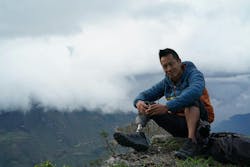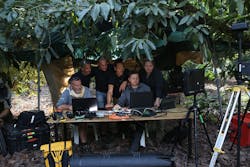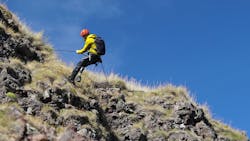What you’ll learn:
- Ancient cities revealed with the latest technology.
- Dr. Albert Lin leading a team in all of these discoveries.
- Places you’ve never seen, in a light not seen in centuries.
Watching the new National Geographic series “Lost Cities Revealed with Albert Lin” had me seeing engineer adventurer Dr. Albert Lin as a modern-day Robinson Crusoe. After a few episodes, he was Indiana Jones. By the end of the series, he was Batman in my eyes. It’s a show of dangerous, high-stakes exploration with jaw-dropping payoffs.
The concept is simple enough—lost cities and civilizations are all over the planet. Many of them are written about, but they’re lost to the sands of time. Dr. Albert Lin sets out to find these places.
He creates a hypothesis about where to begin. Through exploration, observation and tweaking his hypothesis, Dr. Lin and his team set out to chip away at time with the latest in technology, unveiling the cities and places as if they never disappeared.
Radar, LiDAR, High-Tech Imaging, and Drones
Dr. Lin and his team used a myriad of tools. They applied ground-penetrating radar for scanning what’s below the surface, handheld LiDAR sensors for mapping localized places, thermal and optical imaging devices combined with software that could clearly show what the human eye could barely distinguish, and the impressive use of LiDAR drones.
The drones are fitted with LiDAR sensors “with 400,000 lasers beaming to the ground,” as they said during one episode. These drones, piloted by his colleagues Joseph Angelo Steel and Duncan Lees (Visual Skies), would be set off to scan large areas of land at Dr. Lin’s discretion. A whole mountain range in one episode.
When the scans were completed, Joe and Duncan would take all scans and data collected, even combining them with historical data, to create an exact replica of the area. This is what we salivate to see every episode. All of the data was analyzed and displayed. Every time, it’s an explosion of discovery and amazement.
For example, the team can take a mountain scape covered in trees and strip away the foliage. Strip away all growth, showing a completely bare and accurate depiction of the entire mountainscape.
Using “algorithms” to perform software analysis of all the surface detail, they’re able to show where human-made structures once stood. The tiniest detail that an individual could overlook is clear as day with this process. To put the literal icing on this cake, the team also populates those spots with how the structures would have looked. The cities are found in every case.
What stood out to me was the shock and amazement that you would see in the eyes of everyone who they showed this to at each location. Typically, the locals are a mix of those who live there and those who have made a career researching the area. In a single episode, Dr. Lin uncovers what would have taken years, if not decades, for local archeologists to discover. The local scientists even said their research is changing direction because of this output.
Processing the Data
I asked Dr. Lin, with all that data, how do you process it, and how long does it take?
He said the team used mostly gaming computers to process it all. So, generators are running all night, powering this endeavor. They work on the models all night, and often right up to within minutes of their filming the results. He said that although they use technology from leading companies in the field, some things are made by them. In particular, the “augmented-reality results were coded in the field.”
Seeing those results makes for some of the most fun and interesting archeology viewing since the last Indiana Jones movie for me. With 1.5 years filming preceded by years of preparation, the result is fun from start to finish. Well worth the watch.
How is Dr. Lin Batman, you may ask? When you see him shoot a grappling hook up a cliff and ascend with ease, you’ll know.
Dr. Albert Lin encapsulated the whole show rather succinctly during our talk.
“That moment of discovery that is on camera that’s real for me. A real thing that is happening. Nothing is placed there. Those are real moments of ‘ah ha’ and wonder. Sharing this with the world shows there is an important reminder that there is still the unknown out there.”
“It’s a reminder that there is still magic out there.”
"Lost Cities Revealed with Albert Lin" is now streaming at National Geographic.




